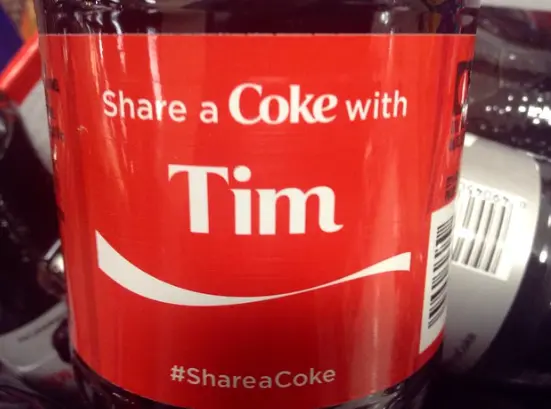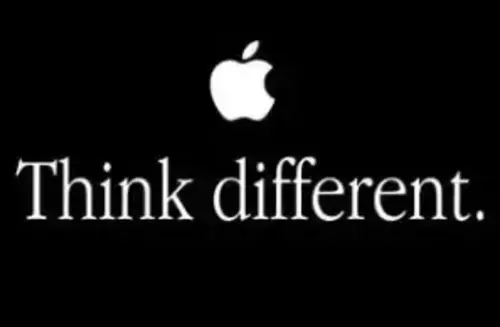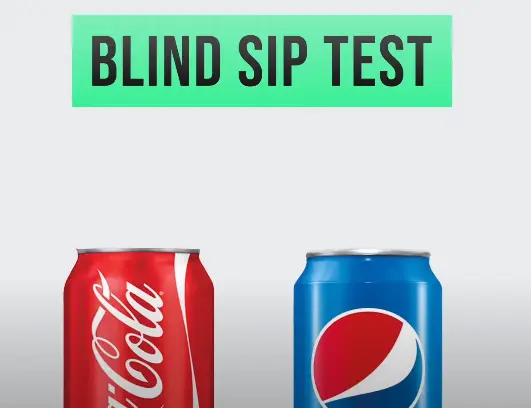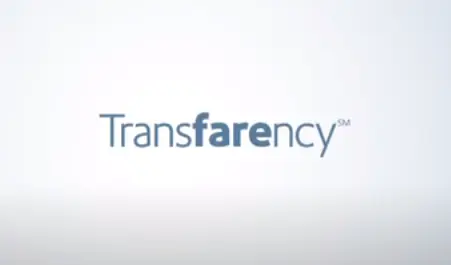Advertising plays a crucial role in the growth and success of businesses. It helps companies reach out to their target audience, increase brand awareness, drive sales, and ultimately contribute to business growth. We will explore several real-life examples of how advertising has led to business growth by effectively reaching and engaging with customers.

Overview of the Importance of Advertising in Business Growth
- Increasing Brand Awareness: Advertising helps businesses gain visibility and create brand recognition among potential customers. By consistently promoting products or services through various channels, companies can increase their brand awareness, making them more memorable and recognizable.
- Driving Sales: Well-executed advertising campaigns can generate leads and convert them into sales. By targeting the right audience with compelling messages and incentives, businesses can effectively influence purchasing decisions and drive sales growth.
- Expanding Market Reach: Advertising allows businesses to expand their market reach beyond their immediate locality. Through different advertising channels, companies can reach a wider audience, potentially capturing new customers and entering new markets.
- Building Customer Loyalty: Advertising can help foster strong connections with customers, leading to increased loyalty. By consistently engaging with customers through meaningful campaigns, businesses can build trust, strengthen relationships, and encourage repeat purchases.
- Creating Competitive Advantage: Advertising enables businesses to differentiate themselves from competitors and showcase their unique selling points. By highlighting key features and benefits, companies can position themselves as the preferred choice within their industry.
- Launching New Products or Services: Advertising plays a pivotal role in introducing new products or services to the market. It creates buzz, generates interest, and educates consumers about the value and benefits of these offerings.
- Establishing Brand Identity: Strategic advertising helps businesses establish and reinforce their brand identity. Consistent messaging, visuals, and brand storytelling contribute to creating a distinct brand image that resonates with customers.
- Adapting to Changing Market Trends: Advertising allows businesses to stay relevant in a constantly evolving market. By continuously monitoring consumer preferences and behavior, companies can adjust their advertising strategies to align with changing market trends.
- Enhancing Reputation: Through well-crafted advertising campaigns, businesses can enhance their reputation and be perceived as trustworthy and reliable. Positive brand associations can significantly impact customers’ perceptions and influence their decision-making process.
- Measuring Effectiveness: Advertising provides opportunities to measure performance and gather valuable data. By analyzing campaign results, businesses can refine their strategies, optimize marketing efforts, and drive continuous improvement.
These real-life examples highlight the significant impact advertising can have on business growth. By leveraging the power of strategic advertising, companies can effectively engage with customers, increase brand visibility, and ultimately contribute to their overall success.
Coca-Cola: Share a Coke Campaign

Success of Coca-Cola’s personalized advertising campaign
Coca-Cola’s “Share a Coke” campaign is a remarkable example of how advertising can contribute to business growth. Launched in 2011, the campaign aimed to create a more personal and engaging experience for consumers by putting their names on Coke bottles.
This personalized approach resonated with consumers, leading to a significant increase in brand awareness and customer engagement. People were excited to find bottles with their names or the names of their loved ones, prompting them to share photos on social media platforms. The campaign generated millions of user-generated content and became a trending topic, further amplifying its reach.
Effect on consumer engagement and revenue growth
The “Share a Coke” campaign had a profound impact on consumer engagement and revenue growth for Coca-Cola. By personalizing their product, Coca-Cola created a sense of connection and exclusivity, fostering brand loyalty among consumers. This led to increased sales, with Coca-Cola reporting a 2% rise in global volume sales during the campaign period.
Moreover, the campaign sparked conversations and generated buzz around the brand, resulting in free publicity and media coverage. The unique and innovative nature of the campaign also won numerous advertising awards, further enhancing Coca-Cola’s brand reputation.
Overall, the “Share a Coke” campaign exemplified the power of personalized advertising in driving consumer engagement, creating brand affinity, and ultimately contributing to business growth. It demonstrated that by tapping into individual preferences and emotions, advertisers can create lasting connections with consumers and establish a competitive edge in the market.
Apple: Think Different Campaign

Role of Apple’s memorable advertising campaign in business success
One of the most iconic and memorable advertising campaigns that contributed to the remarkable success of Apple is the “Think Different” campaign. Launched in 1997, this campaign aimed to reposition Apple as an innovative and forward-thinking brand. It celebrated the rebel spirit and creativity of individuals who have made a significant impact on the world.
The “Think Different” campaign played a pivotal role in reshaping Apple’s image, which was struggling at the time. By associating the brand with influential figures like Albert Einstein, Martin Luther King Jr., and Mahatma Gandhi, it showcased Apple’s commitment to challenging the status quo and inspiring people to think differently.
How the campaign shaped the brand’s identity and increased sales
The “Think Different” campaign helped shape Apple’s brand identity by conveying a strong message of innovation, creativity, and individuality. It resonated with consumers who wanted to be part of something unique and groundbreaking.
This campaign not only revitalized Apple’s image but also contributed to a substantial increase in sales. It generated buzz and excitement around Apple products, driving more people to consider and purchase their innovative devices. The emotionally charged and powerful storytelling in the campaign evoked a sense of aspiration and loyalty among consumers.
The success of the “Think Different” campaign demonstrated the power of effective advertising in influencing consumer perception, elevating brand awareness, and ultimately driving business growth. It exemplified Apple’s ability to create an emotional connection with consumers through compelling storytelling and a clear brand message.
Ultimately, the “Think Different” campaign played a significant role in establishing Apple as a leading brand in the technology industry and reinforcing its reputation for innovation and cutting-edge products.
Pepsi: Pepsi Challenge Campaign

Impact of Pepsi’s taste test advertising campaign on business growth
Pepsi’s iconic “Pepsi Challenge” campaign was launched in 1975 and had a significant impact on the company’s business growth. The campaign involved blind taste tests where participants were asked to taste both Pepsi and Coca-Cola and choose their preferred beverage. The results consistently showed that a majority of participants preferred the taste of Pepsi over Coca-Cola.
This advertising campaign effectively communicated the message that Pepsi had a superior taste compared to its main competitor. It resonated with consumers who valued the refreshing and sweeter flavor offered by Pepsi. As a result, the campaign increased consumer preference for Pepsi and drove sales growth for the company.
Success in challenging Coca-Cola’s market dominance
One of the key reasons the Pepsi Challenge campaign contributed to business growth was its success in challenging Coca-Cola’s market dominance. Coca-Cola had long been the leading soft drink brand, and Pepsi’s aim was to position itself as a viable alternative. By directly comparing the taste of their product to Coca-Cola, Pepsi was able to generate interest and curiosity among consumers.
The campaign not only attracted new customers who preferred Pepsi’s taste, but it also encouraged existing Coca-Cola drinkers to give Pepsi a try. It created a sense of competition between the two brands and positioned Pepsi as a strong contender in the market.
Overall, the Pepsi Challenge campaign played a crucial role in boosting Pepsi’s business growth. It showcased the brand’s commitment to quality and taste, effectively differentiating itself from its main competitor. By challenging Coca-Cola’s market dominance, Pepsi was able to capture new customers and increase its market
California Milk Processor Board: Got Milk? Campaign

Role of the iconic milk mustache campaign in driving business growth
The California Milk Processor Board’s “Got Milk?” campaign is a prime example of how advertising can significantly contribute to business growth. Launched in 1993, this iconic campaign aimed to increase milk consumption and promote the benefits of drinking milk. The campaign featured various celebrities and public figures sporting milk mustaches, accompanied by the tagline “Got Milk?”.
The campaign played a vital role in driving business growth for the dairy industry by creating a strong brand identity and increasing awareness of the health benefits associated with drinking milk. It successfully positioned milk as a staple beverage, especially with its memorable and widely recognized ads featuring celebrities.
Effectiveness in promoting milk consumption and increasing sales
The “Got Milk?” campaign was highly effective in promoting milk consumption and driving sales. It increased awareness about the nutritional value of milk, emphasizing its role in providing essential nutrients like calcium and protein. The campaign’s catchy tagline became deeply ingrained in pop culture, generating curiosity and sparking conversations about milk.
The strategic use of celebrity endorsements helped make the campaign memorable and relatable. The ads not only appealed to a wide audience but also successfully targeted specific segments, such as parents concerned about their children’s nutrition.
The impact of the “Got Milk?” campaign on sales was significant. It generated a surge in milk sales in California, leading to an increase in revenue for the dairy industry. The campaign’s success even expanded beyond California and became a national phenomenon.
Overall, the California Milk Processor Board’s “Got Milk?” campaign exemplifies how advertising can contribute to business growth by creating a strong brand identity, increasing awareness, promoting product benefits, and ultimately driving sales.
Snickers: You’re Not You When You’re Hungry Campaign

Contribution of Snickers’ clever advertising campaign to business growth
The Snickers “You’re Not You When You’re Hungry” campaign has played a significant role in the brand’s business growth. The campaign, launched in 2010, cleverly emphasizes the consequences of hunger and positions Snickers as the go-to solution. By using humor and relatable scenarios, the campaign effectively captures the attention of consumers and creates a strong emotional connection.
The campaign’s success can be attributed to several factors. Firstly, it addresses a basic human need – hunger – in a way that resonates with a wide audience. The humorous and exaggerated depictions of people behaving inappropriately due to hunger instantly grabs attention and creates a memorable impact.
Secondly, the campaign utilizes clever storytelling techniques to deliver its message. The use of popular celebrities in the ads, such as Betty White and Danny Trejo, adds credibility and further engages the target audience. The commercials’ comedic tone and memorable tagline “You’re Not You When You’re Hungry” make it easy for consumers to remember and associate with the Snickers brand.
Effect on brand recognition and consumer engagement
The “You’re Not You When You’re Hungry” campaign has had a significant impact on Snickers’ brand recognition and consumer engagement. The consistent and memorable messaging has firmly implanted the brand’s identity in consumers’ minds.
Through this campaign, Snickers has effectively increased brand recall and improved consumer engagement. The humorous and relatable nature of the ads encourages social sharing and conversation, amplifying the campaign’s reach. Consumers actively participate by sharing their own hunger-induced moments and associating them with the Snickers brand.
According to a study conducted by Kantar Millward Brown, the campaign has yielded positive results for Snickers, including increased brand equity and higher purchase intent among consumers.
In summary, Snickers’ “You’re Not You When You’re Hungry” campaign has made a significant contribution to the brand’s business growth. Its clever advertising approach, combined with relatable storytelling, has helped Snickers become a memorable and engaging brand in the minds of consumers.
Southwest Airlines: Transfarency Campaign

Success of Southwest Airlines’ transparent advertising campaign
Southwest Airlines, a prominent player in the airline industry, implemented a successful advertising campaign called “Transfarency.” This campaign aimed to highlight the airline’s commitment to transparency, simplicity, and customer-centric values. By focusing on these core principles, Southwest effectively differentiated itself from other airlines and strengthened its brand image.
The Transfarency campaign conveyed clear messages to customers, emphasizing Southwest’s lack of hidden fees, free checked bags, and no change fees. This transparency resonated with customers who had grown tired of complex and hidden charges from other airlines. By making their pricing structure easier to understand, Southwest established trust and credibility among its customer base.
Positive influence on customer loyalty and revenue growth
Southwest’s Transfarency campaign had a significant impact on customer loyalty and revenue growth. By prioritizing transparency in their advertising, the airline attracted customers who valued honesty and simplicity. The campaign effectively communicated Southwest’s commitment to providing a hassle-free travel experience, leading to increased customer satisfaction and loyalty.
The transparent messaging also contributed to revenue growth for Southwest. Customers were more likely to choose Southwest over competitors, knowing they could expect fair pricing and no surprises. This resulted in higher customer retention rates and an increase in repeat business, ultimately driving revenue growth for the airline.
Overall, Southwest Airlines’ Transfarency campaign showcased the power of transparent advertising in building a strong brand image and fostering customer loyalty. By prioritizing honesty and simplicity, Southwest successfully differentiated itself in a highly competitive industry and achieved notable business growth.
Conclusion
Advertising plays a vital role in the growth and success of businesses. The ten real-life examples provided illustrate how effective advertising strategies have contributed to business growth and recognition. From increasing brand awareness to driving sales, advertising has proven to be a powerful tool when used strategically and creatively. Whether it’s through traditional media channels or the digital landscape, businesses that invest in advertising can gain a competitive edge and reach their target audience effectively.
Key Takeaways from Real-Life Examples of How Advertising Has Contributed to Business Growth
- Creating Brand Awareness: Effective advertising campaigns can generate widespread awareness of a brand, helping it become a household name.
- Driving Sales: Advertising efforts that highlight unique selling points and offer compelling promotions can drive sales and boost revenue.
- Building Emotional Connections: Advertising can create emotional connections with customers, leading to brand loyalty and repeat business.
- Expanding Market Reach: Advertising allows businesses to reach new markets and target specific demographics to increase customer acquisition.
- Enhancing Brand Reputation: Well-crafted advertising campaigns can enhance brand reputation, positioning businesses as leaders in their industry.
- Creating Competitive Advantage: Advertising can differentiate businesses from competitors by highlighting unique features, benefits, or values.
- Adopting Innovative Channels: Leveraging new and emerging advertising channels, such as social media and influencer marketing, can help businesses stay relevant and reach younger demographics.
- Engaging and Interactive Content: Interactive advertisements that engage customers can leave a lasting impression and increase brand recall.
- Measuring and Optimizing Results: Data-driven advertising allows businesses to measure campaign effectiveness and make informed decisions to optimize future strategies.
- Long-Term Brand Building: Consistent and continuous advertising efforts contribute to long-term brand building, fostering trust and loyalty with customers over time.
These key takeaways emphasize the importance of incorporating advertising into a comprehensive marketing strategy to drive business growth and achieve long-term success.






